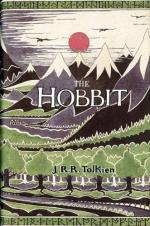|
This section contains 1,311 words (approx. 5 pages at 300 words per page) |

|
J.R.R. Tolkien's The Hobbit has received very little serious critical attention other than as the precursor of The Lord of the Rings. It has usually been praised as a good introduction to the trilogy, and as a children's book, but anyone familiar with psychoanalysis cannot avoid being tantalized by recurrent themes and motifs in the three stories. Bilbo's story has surprising depths that can be plumbed by the reader who is receptive to psychoanalytic interpretations.
The central pattern of The Hobbit is, quite obviously, a quest. Like so many heroes before him, Bilbo sets out on a perilous journey, encounters and overcomes many obstacles (including a confrontation with a dragon) and returns victorious after he has restored a kingdom and righted ancient wrongs. However, this pattern is so commonplace in literature that it is not a very helpful signpost. But it may help in other ways...
|
This section contains 1,311 words (approx. 5 pages at 300 words per page) |

|


